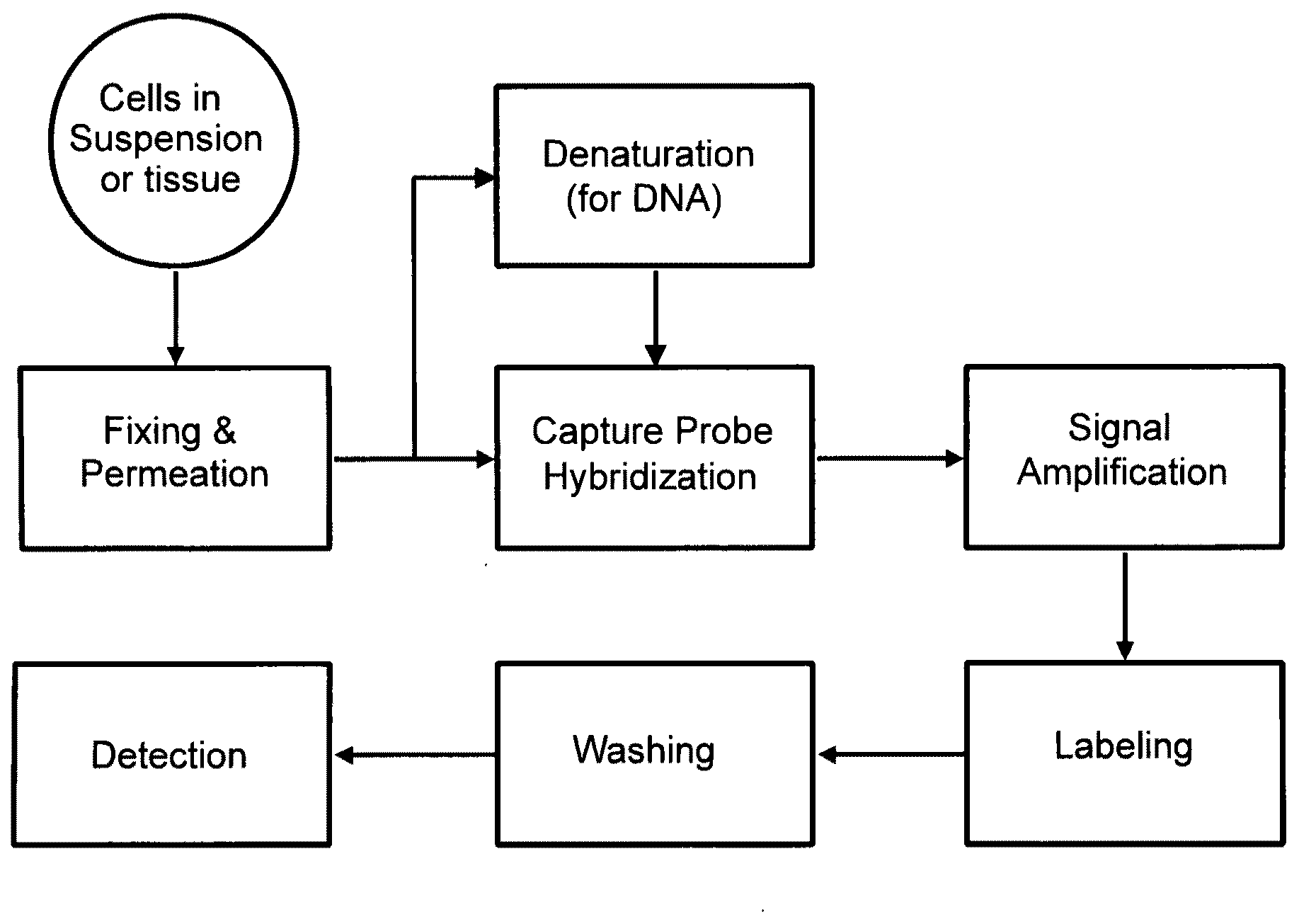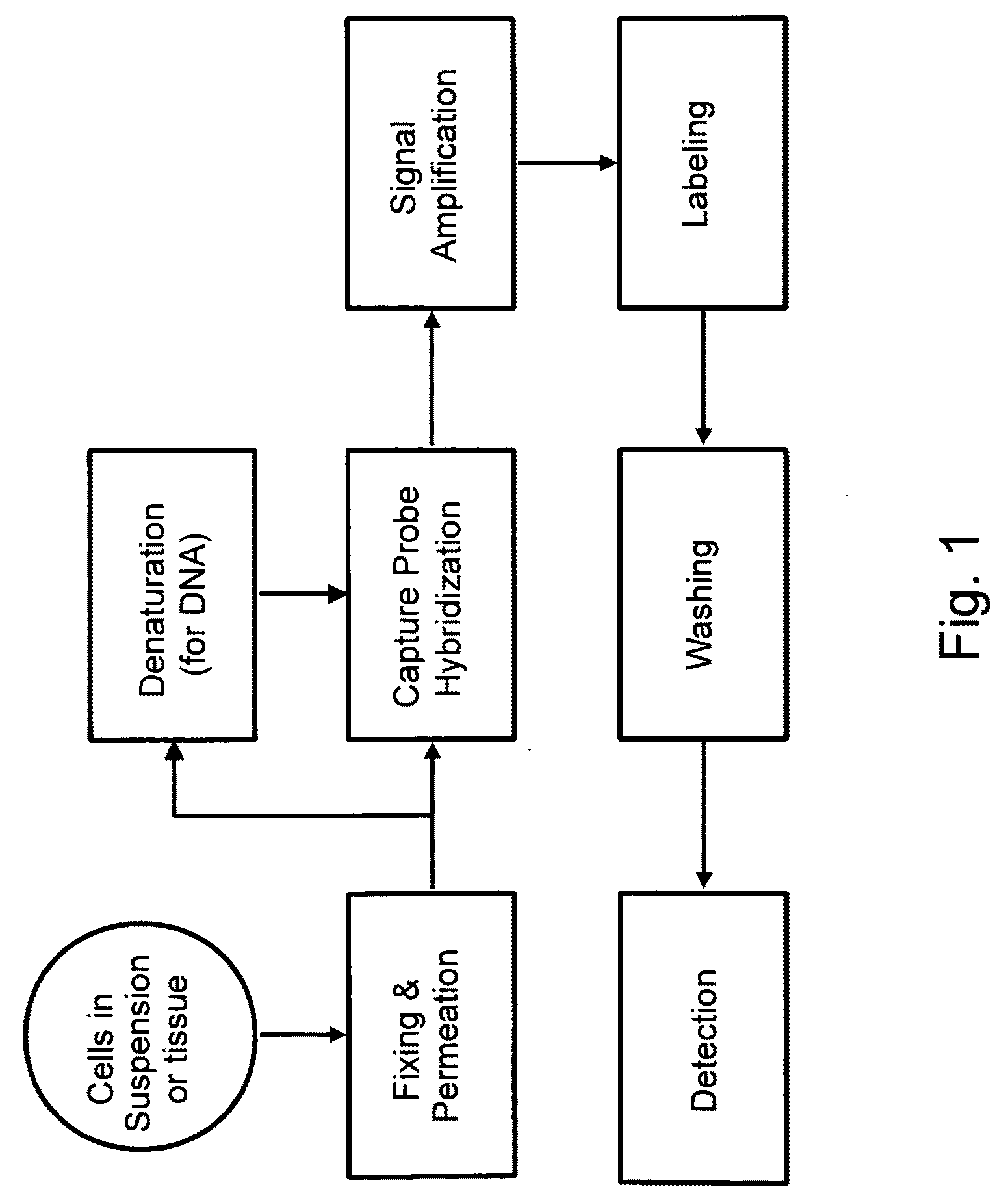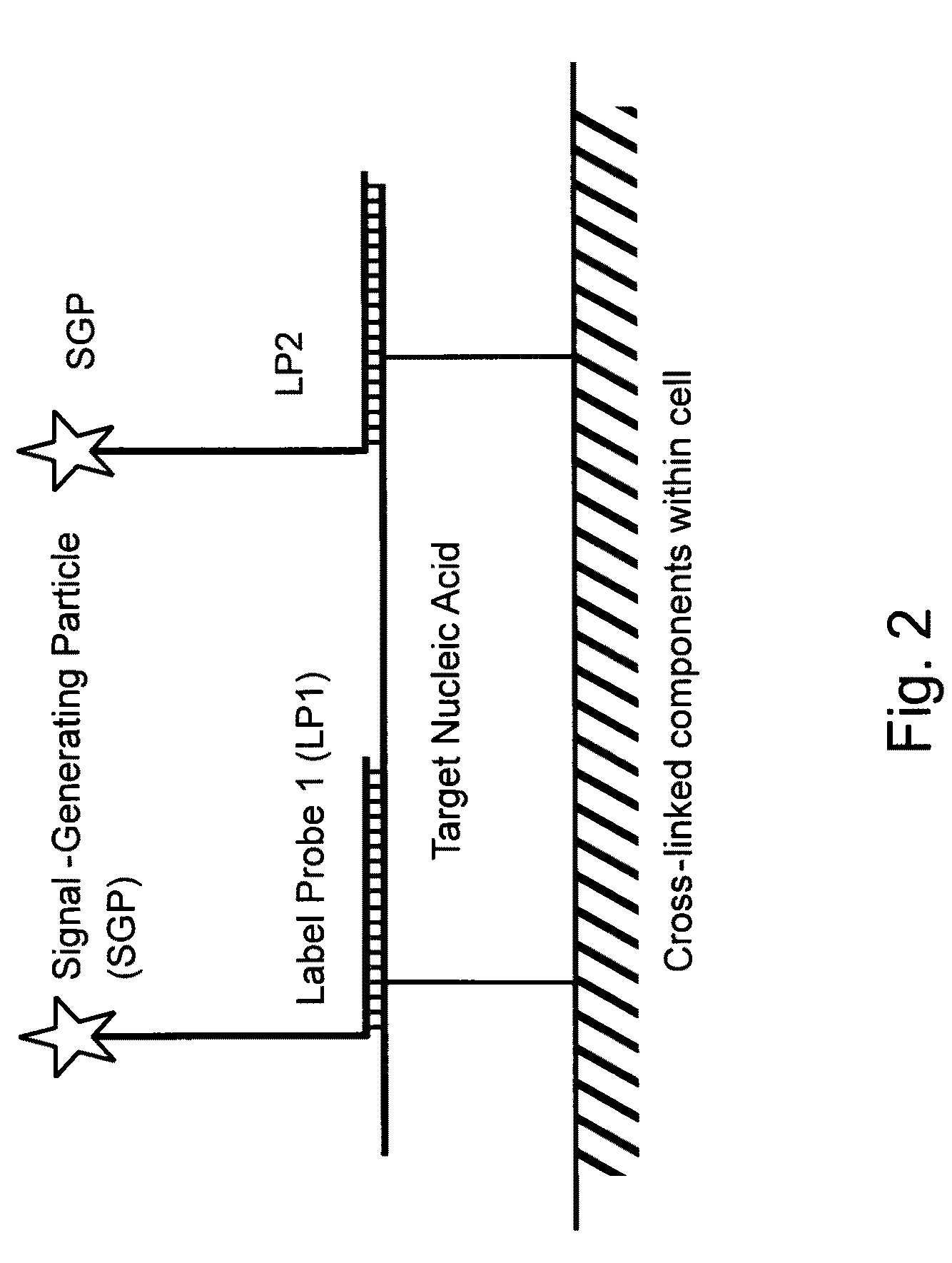Methods of detecting nucleic acids in individual cells and of identifying rare cells from large heterogeneous cell populations
a nucleic acid and heterogeneous cell technology, applied in the field of methods, can solve the problems of insufficient progress in the validation of the clinical utility of ctc detection as a prognostic indicator, low concentration of ctc in peripheral blood or other body fluids, etc., and achieve the effect of simple and convenient way to quantitate the target nucleic acid
- Summary
- Abstract
- Description
- Claims
- Application Information
AI Technical Summary
Benefits of technology
Problems solved by technology
Method used
Image
Examples
example 1
Detection of Nucleic Acids in Individual Cells
[0381]The following sets forth a series of experiments that demonstrate in-cell detection of nucleic acid. The results demonstrate, for example, that when staining cells on a glass substrate with QMAGEX, we can obtain a highly specific signal with a sensitivity of detecting a single mRNA molecule. Moreover, we can achieve staining of multiple mRNAs at the same time using a combination of different target probes and amplifiers. These results further demonstrate the feasibility of detecting cancer cells exhibiting transcriptional upregulation within a population of cells with normal gene expression. The results also demonstrate staining of cells in suspension and identification of them using flow cytometry, eliminating need for a solid support for the cells and allowing for rapid detection of stained cells. These results further demonstrate the ability to detect cells exhibiting transcriptional upregulation from those with low basal levels...
PUM
| Property | Measurement | Unit |
|---|---|---|
| temperature | aaaaa | aaaaa |
| incubation time | aaaaa | aaaaa |
| temperature | aaaaa | aaaaa |
Abstract
Description
Claims
Application Information
 Login to View More
Login to View More - R&D Engineer
- R&D Manager
- IP Professional
- Industry Leading Data Capabilities
- Powerful AI technology
- Patent DNA Extraction
Browse by: Latest US Patents, China's latest patents, Technical Efficacy Thesaurus, Application Domain, Technology Topic, Popular Technical Reports.
© 2024 PatSnap. All rights reserved.Legal|Privacy policy|Modern Slavery Act Transparency Statement|Sitemap|About US| Contact US: help@patsnap.com










